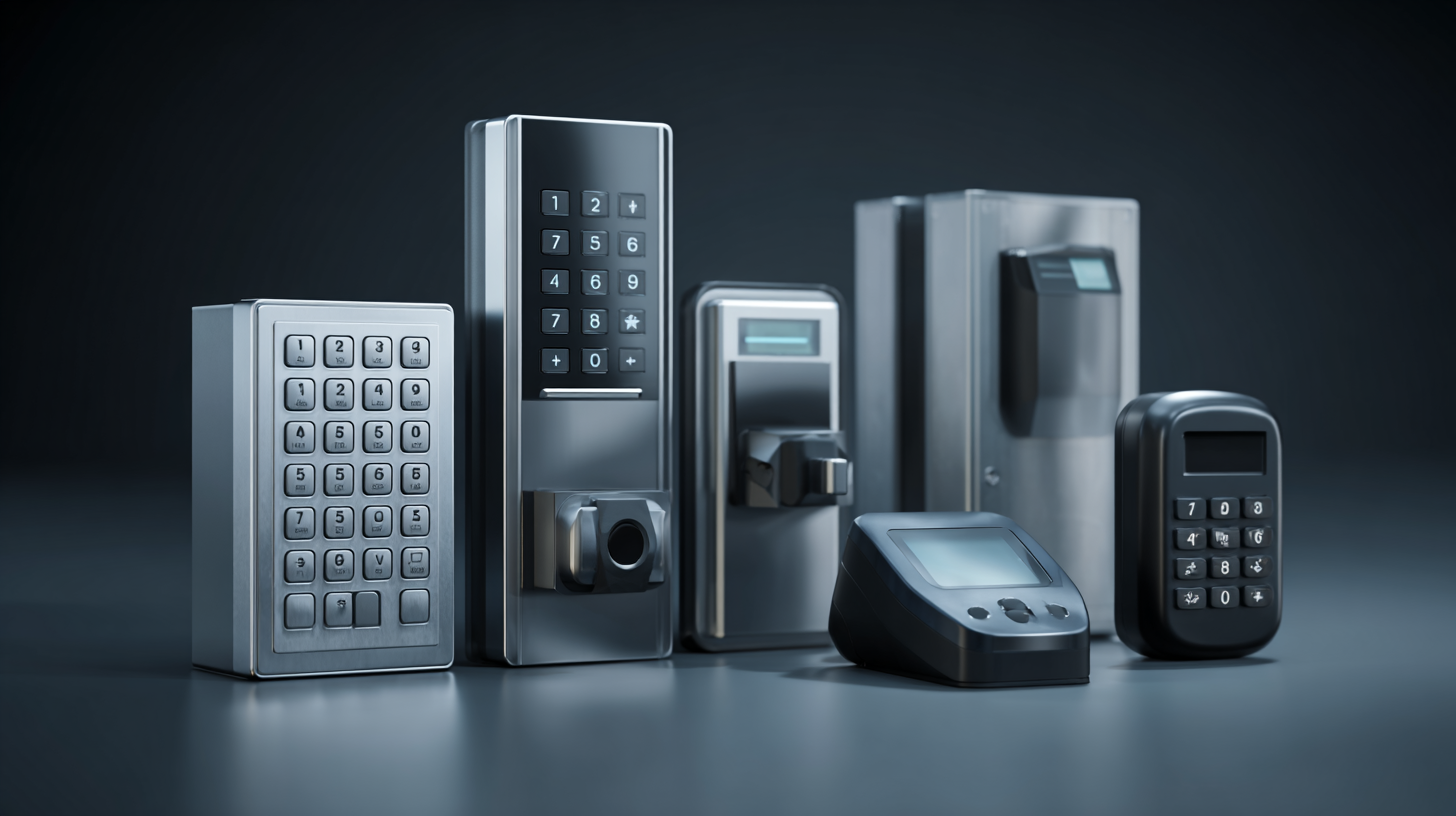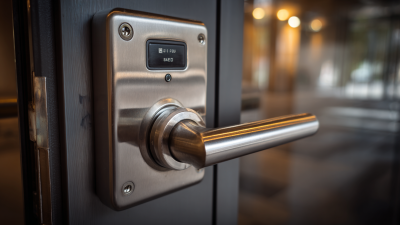Unlocking Safety: A Comprehensive Guide to Innovative Security Access Control Systems
In today's fast-paced and increasingly digital world, the importance of effective Security Access Control Systems cannot be overstated. As businesses and organizations strive to protect their assets, data, and personnel, innovative access control solutions have emerged as critical components of modern security strategies. This comprehensive guide aims to unlock the potential of these systems, offering valuable insights and practical tips to help readers navigate the complexities of access control technology. From biometric authentication and smart card systems to cloud-based management and mobile access, the evolution of access control is reshaping how we ensure safety and security in various environments. By understanding the latest trends and best practices, organizations can enhance their security posture, mitigate risks, and create a safer environment for all. Prepare to delve into the world of security access control and discover the strategies that can effectively protect your assets and streamline your operations.

Exploring the Evolution of Security Access Control Systems
The evolution of security access control systems has been marked by significant technological advancements, reshaping how organizations protect their assets. According to a report by Markets and Markets, the global access control market is projected to grow from $8.6 billion in 2020 to $12.9 billion by 2025, representing a compound annual growth rate (CAGR) of 8.5%. This growth can be attributed to the increasing need for secure access solutions amid rising crime rates and data breaches.
Historically, access control systems relied heavily on physical keys and traditional locks, which posed security risks due to the possibility of duplication and loss. However, the advent of biometric technology, smart cards, and mobile access solutions has revolutionized the industry. New research indicates that biometric systems, such as fingerprint and facial recognition, are anticipated to account for 42% of the total access control market by 2025. This shift towards more sophisticated and user-friendly systems not only enhances security but also streamlines the user experience, providing organizations with a multifaceted approach to access management.
Unlocking Safety: Evolution of Security Access Control Systems
Key Features of Modern Access Control Technologies
Modern access control technologies have evolved significantly, driven by the necessity for enhanced security and operational efficiency. Key features of these systems include smart card access, biometric authentication, and remote monitoring capabilities. According to the latest report by MarketsandMarkets, the global access control market is expected to grow from $8.5 billion in 2020 to $12.2 billion by 2025, illustrating a compound annual growth rate (CAGR) of 7.6%. This growth is largely propelled by the increasing need for security solutions in corporate environments, where sensitive data protection is paramount.
Biometric authentication, leveraging unique individual traits like fingerprints or facial recognition, is one of the standout features in modern systems. The International Data Corporation (IDC) predicts that by 2023, biometric authentication will be utilized in over 50% of all access control implementations, underscoring its critical role in mitigating unauthorized access risks. Additionally, remote monitoring capabilities provide real-time surveillance and control from anywhere, leading to improved response times in security management. This integration of advanced technologies not only enhances safety but also streamlines operations, making access control systems a vital component of contemporary security infrastructure.
Comparing Traditional vs. Innovative Access Control Solutions
As businesses increasingly pivot towards digital transformation, the importance of implementing robust access control systems has become paramount. Innovations in security technology are reshaping traditional security paradigms, moving from rigid, compliant-driven processes to more agile and intelligent control mechanisms. A recent report highlights that organizations adopting advanced identity governance and management solutions see a 30% reduction in security breaches compared to those relying on outdated systems. This shift in strategy underscores the need for innovative access control solutions that integrate emerging technologies like artificial intelligence and machine learning.
Conversely, traditional access control systems often struggle to provide the flexibility and responsiveness demanded by today’s dynamic business environments. These systems typically operate on a set framework that restricts adaptability, leading to increased vulnerabilities. According to industry analysts, more than 60% of enterprises expressing dissatisfaction with their legacy security systems cite the lack of adaptability as a primary concern. As organizations look to not only safeguard their assets but also enhance operational efficiency, the comparative analysis of traditional versus innovative access control solutions makes a compelling case for evolution in security practices.

The Role of Biometrics in Enhancing Security Access Control
In today's rapidly evolving security landscape, the integration of biometrics into access control systems has emerged as a pivotal element in enhancing safety measures. Biometrics, which includes techniques such as fingerprint recognition, facial recognition, and iris scans, provides a unique layer of protection that traditional systems lack. By relying on an individual’s biological traits, security systems can ensure that only authorized personnel gain entry, significantly reducing the risk of unauthorized access.
Tips for implementing biometric systems effectively include selecting technology that aligns with your specific security needs and environment. Ensure that the system you choose can handle your anticipated user volume and access patterns. Additionally, it’s important to combine biometric access with other security measures, such as two-factor authentication, to create a robust security framework.
Moreover, regular audits and updates of your biometric systems can help maintain security integrity. Keeping your technology up to date with the latest standards and best practices minimizes vulnerabilities. Educating users about the benefits and proper usage of biometric systems can also enhance their effectiveness, fostering a culture of security awareness within your organization.
Future Trends: Smart Technology in Access Control Systems
The future of access control systems is being significantly shaped by smart technology. With the integration of wireless intercoms, the market is witnessing a rapid evolution towards more secure and efficient communication solutions. The advent of Wi-Fi enabled devices has allowed for seamless interactions between indoor and outdoor intercom systems, enhancing user experience while bolstering security measures. As smart home automation continues to gain traction, these technologies are expected to streamline operational processes and offer enhanced safety features, making them indispensable in modern security protocols.
As consumer demand for smart home solutions grows, so does the emphasis on security services within this domain. Projections suggest that the smart home security service market will experience substantial growth, reaching an estimated market size of $3.9942 billion by 2033, fueled by advancements in AI and machine learning. These innovations are paving the way for smarter, more responsive security systems that not only detect threats but also anticipate and mitigate risks, thereby providing homeowners with peace of mind and improved surveillance capabilities. The integration of intelligent technologies is set to redefine access control, making it more sophisticated and user-friendly than ever before.

Related Posts
-

Ultimate Guide to Selecting the Best Access Control Panel for Your Security Needs
-

Navigating Import Export Certifications for the Best Access Control Locks Explained
-

Digital Innovations in Best Access Control Security Solutions
-

Understanding Import and Export Certifications for Best Security Access Control Systems
-

Emerging Technologies for 2025 Evaluating Alternatives to the Best Door Access Control Kit
-

Ultimate Guide to Access Control Door Lock Comparison for Global Buyers
- • HighpowerOne Touchscreen Controller • HighpowerOne Mobile Credential App
- Highpower Management System
- • Pushplate 100 PNZ
- • Pushplate 110 PNZ
- • Pushplate 120/140 PNZ
- • Pushplate 130/150 PNZ
- • Pushplate 200 PNZ
- • Pushplate 100
- • Pushplate 110
- • Pushplate 120/140
- • Pushplate 130/150
- • Pushplate 200
Mechanical Timers
Proximity ID Access Cards and Fobs
Proximity Card Readers
- • Proximity Reader P-300
- • Proximity Reader P-400
- • Proximity Reader P-500
- • Proximity Reader P-620
- • Proximity Reader P-640
- • Proximity Reader P-710
- • Proximity Reader P-900
- • Ranger Proximity Readers
- • Ranger Controls
- • Sure-Fi Wireless Interfaces
Smart Series JX Readers
Electromagnetic Locks
Highpower Power Supplies
• H505
• H512
Security Products Summary
